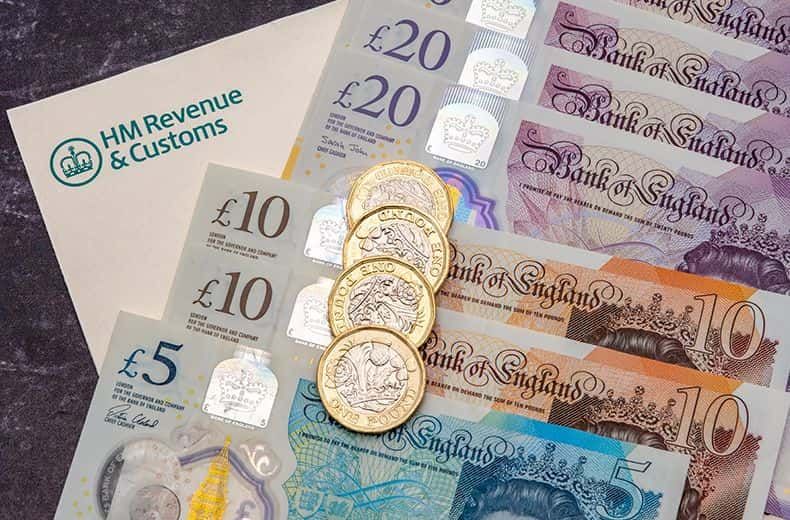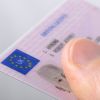To complicate matters further, road tax rates are automatically adjusted by the Government in line with inflation. The most recent change was made on 1 April 2025, with rates increased for the 2025/26 financial year. There are important rules you need to understand when it comes to buying or selling a vehicle, too.
Confused? Don't worry, we have put together a comprehensive guide to help you understand road tax (VED) in the UK.
How much is my car tax in 2025?
For most drivers, the cost of car tax in 2025 is £195. If your vehicle had a list price that exceeded £40,000 when it was first sold then you may also be liable for the 'luxury car tax' fee, which adds £425 to the vehicle's annual VED costs - taking it up to £620.
You may pay less or more if your car was first used before 2017. The exact fee for your annual road tax will boil down to the year your car was first registered and the type of fuel it uses.
Electric cars no longer qualify for free road tax. You can find out more about VED for EVs in our electric car road tax guide.
- How to pay road tax: everything you need to know
- Driving without tax – what's the penalty?
- Euro 7 emissions standard: what is it and when does it come into effect?
- Car servicing
UK car tax bands explained
Vehicle tax bands are based either on engine size, or fuel type and carbon dioxide (CO2 emissions), depending on when the vehicle was first registered.
Cars first registered on or after 1 April 2017 are taxed against one of three VED bands - zero, standard or premium.
For cars registered between 1 March 2001 to 31 March 2017, the rates are split into different CO2 bands – the lower the tailpipe emissions, the lower the vehicle tax.
In order to tax a vehicle, suitable car insurance cover must be in place, while the vehicle must also have a valid MOT if it is over three years old (four years in Northern Ireland). Both are checked electronically when you apply for car tax.
How do I find the tax band for my car?
You will need the year of your car’s registration to find out the tax band. To do this, refer to your vehicle’s V5C logbook and look up the date of first registration of the car, found on page one of the logbook. Once you know the year the car was first registered, you will be able to find the vehicle’s specific tax band and yearly cost.
Tax bands for cars registered before 1 March 2001
Cars registered before 1 March 2001 are classed as Private/Light Goods (PLG) vehicles, or private motor cars or goods vehicles not more than 3,500kg revenue weight.
The system for cars is split into two categories of engine size – not over 1549cc and over 1549cc.

RAC sale – up to 33% off*
• Roadside cover from £5.29 a month†
• We get to most breakdowns in 60 mins or less
• Our patrols fix 4/5 breakdowns on the spot

| PLG Tax Class 11 | 12 months | Six months |
|---|---|---|
| Not over 1549cc | £220 | £121 |
| Over 1549cc | £360 | £198 |
In both cases, you can also pay via Direct Debit, but you’ll pay more overall.
For example, the total payable for 12 months road tax for a car over 1549cc by 12 monthly Direct Debit instalments is £378.
Tax bands for cars registered after March 2001 and before April 2017
VED road tax rates for cars first registered after March 2001 and before April 2017 are split across 13 bands depending on the CO2 emissions of the vehicle. In basic terms, the lower the CO2, the lower the tax band.
Since 2025 VED rule changes, cars with CO2 emissions below 100g/km no longer qualify for free road tax. This means you now have to pay £20 a year for VED if your car emits up to 100g/km of CO2.
Road tax for petrol and diesel cars registered after March 2001 and before April 2017 are broadly the same.
| VED band | CO2 emissions | Annual rate |
|---|---|---|
| A | Up to 100g/km | £20 |
| B | 101-110g/km | £20 |
| C | 111-120g/km | £35 |
| D | 121-130g/km | £165 |
| E | 131-140g/km | £195 |
| F | 141-150g/km | £215 |
| G | 151-165g/km | £265 |
| H | 166-175g/km | £315 |
| I | 176-185g/km | £345 |
| J | 186-200g/km | £395 |
| K | 201-225g/km | £430 |
| L | 226-255g/km | £735 |
| M | Over 255g/km | £760 |
Get a car service at home
RAC Mobile Mechanics can come to you, saving you the hassle of going to a garage.


Tax bands for cars registered after April 2017
On 1 April 2017, the system for taxing a new car in the UK changed. The CO2-based VED system was replaced with three new road tax bands - zero, standard and premium.
The changes only affect cars first registered after April 2017 and introduced in direct response to falling CO2 emissions levels, meaning many motorists in the UK were paying little or no VED. This cost the Treasury millions of pounds in lost revenue, prompting the Government to make important changes to the way road tax is calculated.
Cars first registered after April 2017 are still liable for the first-year ‘showroom tax’, with the first year rate based on the vehicle’s CO2 emissions. From year two, the standard rate is applied and drivers are required to pay £195 per year while new cars with a list price of more than £40,000 pay an additional £425 for the first five years the standard rate is applied.
The road tax system changed again April 2025 with electric cars charged for VED for the first time. New electric cars are subject to the standard rate of VED and the £40,000 premium car tax fee, EVs are also subject to the first-year showroom tax (which applies to vehicles with CO2 emissions 1 to 50g/km).
| CO2 emissions (g/km) | First year rate | Standard rate* |
|---|---|---|
| 0g/km | £10 | £195 |
| 1 - 50 | £110 | £195 |
| 51 - 75 | £130 | £195 |
| 76 - 90 | £270 | £195 |
| 91 - 100 | £350 | £195 |
| 101 - 110 | £390 | £195 |
| 111 - 130 | £440 | £195 |
| 131 - 150 | £540 | £195 |
| 151 - 170 | £1360 | £195 |
| 171 - 190 | £2190 | £195 |
| 191 - 225 | £3300 | £195 |
| 226 - 255 | £4680 | £195 |
| Over 255 | £5490 | £195 |
*Cars with a list price of over £40,000 when new pay an additional rate of £425 per year on top of the standard rate, for five years. The five-year time limit starts from the second year the car is first registered.
What is car tax or VED and why do I have to pay it?
Vehicle Excise Duty (VED) – also known as car tax or road tax – is essentially a tax for using a vehicle on public roads in the UK.
It was introduced in 1937 and replaced the old system of road tax, which traces its roots back to the taxation of Hackney Carriages in the 17th century.
The tax disc was introduced in 1921 and, until 1974, car taxation was handled by local authorities.
Then, in 1974, the DVLC (Driver and Licensing Vehicle Centre) was established, with an office in Swansea handling all vehicle and driver registration issues. The DVLC later became the DVLA (Driver and Vehicle Licensing Agency) and the tax disc was abolished in 2014.
Each year, the DVLA collects around £5 billion in VED, but not all of this is spent on road improvements and infrastructure. In fact, VED is grouped in with other forms of tax, meaning the income from your road tax is just as likely to be spent on education or healthcare as it is on roads.
How is car tax monitored?
DVLA consigned the tax disc to the history books, which means motorists are not required to display a paper disc in the windscreen.
Instead, VED is handled by an electronic database, as the government continues to digitise public services.
Today, the police and other law enforcement agencies use a network of Automatic Number Plate Recognition (ANPR) cameras. These cameras might be situated at the roadside, or located in a police vehicle.
The ANPR system exchanges data with the DVLA database which keeps a record of all taxed and untaxed vehicles.
When do you have to pay your car tax?
If you own a vehicle, you will automatically receive a reminder before the tax is due to expire, which is always at the end of a given month.
In other words, if your vehicle is taxed for 12 months from 1 January, you’ll need to renew before the end of December.
You can tax a car for six or 12 months.
You’re also liable for road tax as soon as you take ownership of a car, although if you’re buying an efficient new vehicle, this might cost less than you think. In fact, buy wisely and you might pay nothing at all.
- Driving licence codes and categories explained
- Driving without insurance - your FAQs answered
- How to report an abandoned car
- RAC - our work for drivers
How much do I have to pay for my car tax?
How much you have to pay depends on age of your car and the tax band it is in, use the tables in the tax bands explained section to find out how much you will have to pay for your car.
How do I pay for my car tax?
By far the easiest way to pay for road tax is to do it online.
To tax your car, you’ll need a reference number from one of the following documents:
- A recent reminder (V11) ‘last chance’ warning letter from the DVLA
- Vehicle logbook (V5C) in your name
- A green, new keeper supplement (V5C/2) from a logbook of a car you’ve just bought.
The system is extremely easy, and you can pay via debit card, credit card or direct debit.
Note, additional charges may apply if you pay via direct debit.
If you’d rather not pay online, you can telephone the DVLA’s 24-hour service on 0300 123 4321, although direct debit is not an option over the phone.
Alternatively, for something a little more old-school, you can tax a vehicle at a Post Office that deals with vehicle tax.
What happens if I don’t tax my car?
If you’re the registered keeper of an untaxed vehicle, you’ll be issued with a Late Licensing Penalty (LLP) letter.
The fine is £80, but this can be reduced to £40 if you pay within 33 days. If you fail to pay, the case will be referred to a debt collection agency.
Anyone caught using or keeping an untaxed vehicle without a SORN (Statutory Off Road Notification)* will be issued with an Out of Court Settlement (OCS) letter.
The OCS is set at £30 plus one-and-a-half times the outstanding vehicle tax rate.
If this is not paid, the case may be pursued via a magistrates’ court, with a penalty of £1,000 or five times the amount chargeable (whichever is greater).
This penalty increases to £2,500 if you’re caught using or keeping an untaxed vehicle on a public road with a SORN in place.
In both cases, the vehicle might be clamped, and a £100 clamp release fee will be payable within the first 24 hours.
If the vehicle is removed, the fee increases to £200, along with a £21 per day storage fee beginning once the vehicle has been removed to the vehicle pound.
Driving without car tax, can lead to serious consequences - with a fine up to £1000. Now that the disc is now longer in use, the police use a network of Automatic Number Plate Recognition (ANPR) cameras to check if a car is taxed.
If a car that is not taxed is abandoned, the vehicle is stored for a period between 7 and 14 days, at which point it might be disposed of at auction, broken for spares, or crushed.
*You need to make a SORN when you take a vehicle ‘off the road’ and you want to stop taxing and insuring it.
Car tax exemptions
The following vehicles are exempt from vehicle tax, although you’ll still need to apply for it:
- Vehicles used by a disabled person
- Disabled passenger vehicles
- Mobility scooters, powered wheelchairs and invalid carriages
- Historic vehicles built more than 40 years before 1 January of the current year
- Electric vehicles
- Mowing machines
- Steam vehicles
- Vehicles used just for agriculture, horticulture, and forestry
For cars registered on or after 1 March 2001, the system is a little more complex, but the option to pay via direct debit remains.
What happens to your road tax when you sell your car?
Don’t be caught out by the changes to the system when buying a new car, introduced in October 2014.
Since then, it has not been possible to transfer any unexpired tax to the new registered keeper, meaning a new owner must tax the car before driving away.
Similarly, if you’re selling the vehicle, be sure to let the DVLA know. Any remaining tax will be refunded to you.
FAQs
What are VED rates?
VED stands for Vehicle Excise Duty, and it is a yearly tax paid by the owners of cars, motorbikes, vans, and other motor vehicles registered in the UK.
It is also known as road tax or car tax. VED rates are the amount of money paid by the vehicle owner to the government, depending on the type and age of the vehicle. The amount of VED paid depends on the type of vehicle and its age.
It should be noted that some vehicles are exempt from paying VED, such as classic cars, and vehicles used for disabled people. VED rates are set by the government and are subject to change.
How is VED calculated?
VED, or Vehicle Excise Duty is a tax placed on vehicle owners to help fund road maintenance, research, and public transport. The amount of VED you pay is based on the type of vehicle you drive and the type of fuel it uses.
Generally, the more emissions a vehicle produces, the more VED you will pay. For cars registered after 1st March 2001, the VED is calculated by taking into account the vehicle’s CO2 emissions. This information is taken from the manufacturer’s CO2 emissions figures and is then broken down into different bands.
The bands range from A (the lowest) to M (the highest) and are based on the amount of CO2 emitted per kilometre (g/km). For cars registered before 1st March 2001, VED is calculated by taking into consideration the engine size.
The amount of VED you pay will depend on the age of your vehicle, the type of fuel it uses, and the CO2 emissions or engine size. The VED rates can be found on the Government website.
It is important to note that VED rates can change from year to year, so it is important to check the latest rates before you buy a car.

RAC sale – up to 33% off*
• Roadside cover from £5.29 a month†
• We get to most breakdowns in 60 mins or less
• Our patrols fix 4/5 breakdowns on the spot














